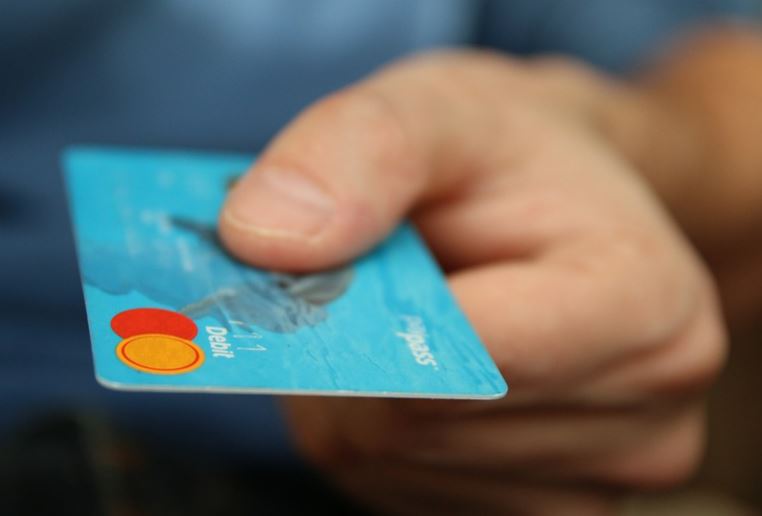Technology is changing very rapidly. For more than a decade, people have been using portable personal devices such as laptops and smartphones to buy and sell goods and services on online shopping sites. Personal information was flowing freely in the beginning but it was only after the first thefts that we started paying attention to our personal information.

It is only after our identity has been stolen and the crime has been successfully committed that each website is seen as a less secure. With our increased awareness, we will eventually do our due diligence and verify that those with whom we come in contact are who they claim to be.
Every day, more and more personal databases fall prey to hackers who can find passwords to access accounts. The illusion of digital security is crumbling.
Unfortunately, it usually takes a personal encounter with these cybercriminals before people are less inclined to provide compromising personal information to online merchants. Blockchain technology offers a unique assurance of change and gives consumers control over their online identities, adding a sustainable level of security that provides peace of mind when managing all online communities and marketplaces.
Below is a quick and easy overview of Blockchain’s technological capabilities and how it aims to combat online fraud, protect your personal information while allowing you to continue shopping online as you always have.
A quick overview of blockchain technology
A blockchain is a decentralized network of peers that maintains a digital ledger for all transactions in the system. Instead of using a central database to store financial data, a blockchain relies on the user to change and update transaction data and personal account balances.
The fact that no one person can control the entire network is the basis for the enhanced security that only blockchain can provide. Blockchain has the potential to revolutionize business far beyond cryptocurrency, and one of its most promising applications is improving data security. Personal data theft and identity theft are two of the most dangerous financial problems that most consumers ignore or neglect.
In 2018, more than four billion data records were stolen, most of which we didn’t even know had happened. Currently, most users are more concerned about their data being stolen via social media, while the loss of data from financial institutions is the real threat, as this data can be used to wreak financial havoc on us. Before we can consider how to combat this threat of personal data theft, we must first consider how it happens.
Credit cards and financial data
Most people who buy goods and services over the Internet have a credit or debit card. VISA exceeded $2 billion in payment volume in the third quarter of 2018, showing the volume of transactions credit card companies are responsible for.
All of us who have a credit or debit card know that we need to know how credit card data can be stolen and how to protect against it.
To that end, we do not leave our credit card information unattended or write it down anywhere, as this could leave us at the mercy of unscrupulous individuals who would like nothing more than to sponsor their purchases. To limit the risk of credit card data theft, some consumers have chosen to replace credit card payments with NFC (contactless) payments using a cell phone.
How does a contactless payment system work?
Since we’re talking about data, it seems counterintuitive to talk about replacing one set of data (a visible credit card) with another set of data (invisible transmission) that seems even more difficult to protect. The contactless payment system is more secure than credit card data because it never sends credit card data.
The contactless payment system (NFC) uses a token creation method that links credit card information to the bank through a secure transmission that verifies the user’s card and creates a token that is sent to the phone.
It then generates a dynamic token from the initial token received from the bank, which changes dynamically and can be used for payment by sending this secondary token over a data transmission medium (contactless transactions use a specific radio frequency identification [RFID] as a channel). The secondary token activates over time and the software constantly updates it, so even if it is intercepted, it becomes unusable almost immediately.
The speed of transactions with this method is much faster than cards and cash and can be done without the help of a cashier. This means you don’t have to hand over your card and you can keep track of it.
How does tokenization contribute to data security?
The tokens generated by the contactless payment solution do not look like your credit card, so there is no chance of your card being decrypted and your personal information stolen, even if the system were to be hacked, which would lead to identity theft and legal consequences.
Personal DatabaseWith the implementation of tokenization, the contactless payment method ensures that the data sent from the phone to the recipient is only valid for that transaction and that the token sent changes again later.
This dynamic change ensures that it is impossible for someone to use a similar token generator to try to decode the code to generate tokens associated with your card.
Tokenization is nothing completely new, but tokens are usually tied to the blockchain because they are very common in this type of technology and provide a secure way to store personal data.
Benefits of blockchain technology in fraud prevention.
Illegal activities in payment processing can be detected and prevented without the involvement of individuals by using the following blockchain fraud prevention features:
Permanence. You cannot disable the system because it works simultaneously on multiple devices around the world. Not all mechanisms or devices that store full transaction history can be hacked at the same time.
Transparency. Because it is a chain with separate blocks, the system keeps a record of all transactions in each of these blocks. If corrections or additions occur in these records, they must be verified and checked by the block validator system, which are machines with strict rules that must be followed.
Interference. Illegal interference is noticed immediately and the parties involved are prevented from making such transactions.
Immutability. The blockchain offers important advantages for fraud detection. Once a record is entered into the system, it cannot be deleted or forged.
Encryption. Blockchain technology uses commonly used Encryption protocols that protect the identity of users. Validation and confirmation are only possible with unique digital signatures. This information cannot be modified or recreated by anyone, given the random nature of its creation.
Deferred payments and multiple signatures. If you need to pay for a certain product but do not trust the seller, blockchain allows you to use multiple-signature transactions for deferred payments. In this case, the seller does not receive money until the buyer gets his product back. The delivery service (or another trusted party) can provide an additional arbitration layer to ensure that the buyer has the money and the seller ships the goods.
While blockchain technology provides better security, it alone cannot protect your digital wallet from hacking or identity theft. It should be noted that blockchains use the additional help of machine learning capabilities to improve protection.
This technology acts as an additional layer and analyzes algorithms and behavioral patterns of users. For example, personal information can be stolen or used, but no one can fraudulently copy someone’s behavior because it is completely unique.
So, if you want to secure your digital identity and prevent any change in its identity, blockchain technology will protect you from such fraud. In summary, your personal information should be stored in a blockchain structure that can only be accessed by authorized participants who can verify and guarantee its validity.
Although thefts in payment processing sometimes occur, it is critical to use dedicated blockchains designed for companies and users working with machine learning software. These technologies are designed to resist vulnerabilities and provide you with greater security.
What does this mean for consumers?
The idea of blockchain is one that gives users power over their transactions. This premise underlies every cryptocurrency produced, including the very first one, Bitcoin. However, we must look beyond Bitcoin or any other cryptocurrency if we are to accept blockchain as a fully-fledged technology.
The blockchain, through the creation of tokens, gives us a level of security that does not exist in any banking institution in the world. While we can reclaim our individuality in transactions through a contactless NFC payment method, we must encourage banking institutions to be more proactive in securing our accounts.
After all, a bank as an institution can close its doors and the owners still survive, but it is the people who lost the money who suffer the consequences.
Blockchain fills the security gap
Blockchain technology and its decentralized and encrypted network can bridge the gap between the consumer and the service provider, where it is most susceptible to poaching by online criminals. This additional layer of blockchain security would be sufficient to represent and ensure the safety of personal data and, again, create a sense of trust when shopping online.
When blockchain technology is used to complete a transaction, the consumer has a secure account from which to send the necessary funds. For those familiar with the blockchain revolution, this secure account is your crypto-money wallet.
Originally intended for investors who needed encrypted storage, digital wallets are a secure place where all personal information remains accessible to the owner only. Wallets are given a unique identification number, similar to a bank account number used for online purchases.
Once the transaction is complete, the wallet broadcasts the transaction on the blockchain network for all to see. In other words, you haven’t exchanged personal information directly with the merchant, avoiding this sensitive moment when your data could be most at risk. Even if hackers could break into a website’s server to access customer data, they wouldn’t find anything of interest.
Consumer awareness is always important
Blockchain technology reduces the risk of identity theft, but it doesn’t allow consumers to be completely safe from these criminals. A determined attacker could try to gain access to your digital wallet, take control of your money, and leave you powerless against the threat. It is always necessary to secure all personal devices with a reliable antivirus program.
Stay updated on the cyber attack methods and make sure that you use the most advanced applications on the market to fight these online hackers. Regardless of how much time you spend online, it makes sense to know how to protect your personal information and privacy from people who want nothing more than to steal your identity and cause you harm. The good news is that you can still use your devices, but in a more secure way, without interrupting your normal online routine.



